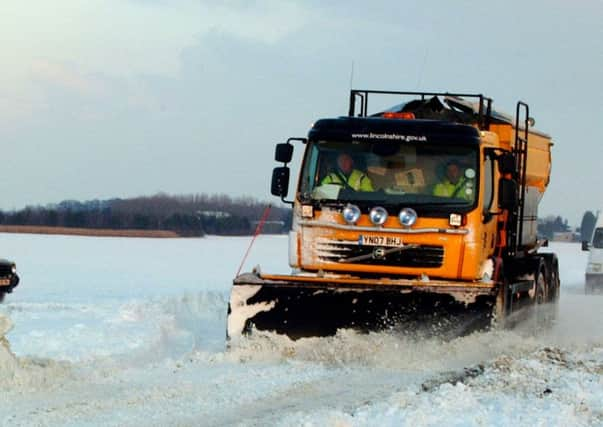FEATURE: What is it like for the gritting teams?


“We receive weather updates from the Met Office several times per day, and we hold daily conference calls to decide whether action is required.
“Both Kier and Lincolnshire County Council use a software which helps to coordinate the activity, recording the weather conditions and the type of action required.
Advertisement
Hide AdAdvertisement
Hide Ad“The system sends text messages to the drivers on the rota, who text back to confirm that instructions are understood.
“Kier have almost 100 drivers available, and finding the right people can be difficult.
“Drivers need at least LGV-2 plus a Driver Qualification Card. An NVQ in Winter Operations is preferable but we can provide that training if people are interested.
“When the team get a shout, drivers report to their nearest depot where they load and check their gritter.
Advertisement
Hide AdAdvertisement
Hide Ad“Drivers have allocated routes, so they know the roads and the local variations in road surface temperature and moisture levels.
“Each route takes approximately two-and-a-half hours after which the drivers return to their depot for a de-brief with their supervisor.
“Many of the drivers also work within the Lincolnshire Highways teams, so extended periods of cold weather can put pressure on resources.
“It’s important that our drivers have enough rest, so a period of heavy snow means that we have to put all hands to the pump to keep the service going.
Advertisement
Hide AdAdvertisement
Hide Ad“In Lincolnshire we get more snow than other counties, so we are used to managing with these situations.
“It’s really important that all drivers in Lincolnshire do their bit to help, and there are some key bits of advice that really help us deliver the service.”
How you can help:
n If you are driving and you see a gritter coming up behind you, pull over in a safe location and allow the gritter to pass
n If you park in the street, please pull up as close to the kerb as possible especially on estate and town centre roads. This is to allow safe and unrestricted passes for gritters
Advertisement
Hide AdAdvertisement
Hide Adn If you believe the road conditions are very poor then think about leaving your car at home and using public transport or walking. The first thing to ask is, do I need to make this journey?
n If you need to travel then check the local and regional forecasts beforehand
n Make sure your car is ready for winter; screen wash, anti-freeze and good tyres with correct inflation
n If you pass a gritter with a snow plough fitted, please allow extra room when passing